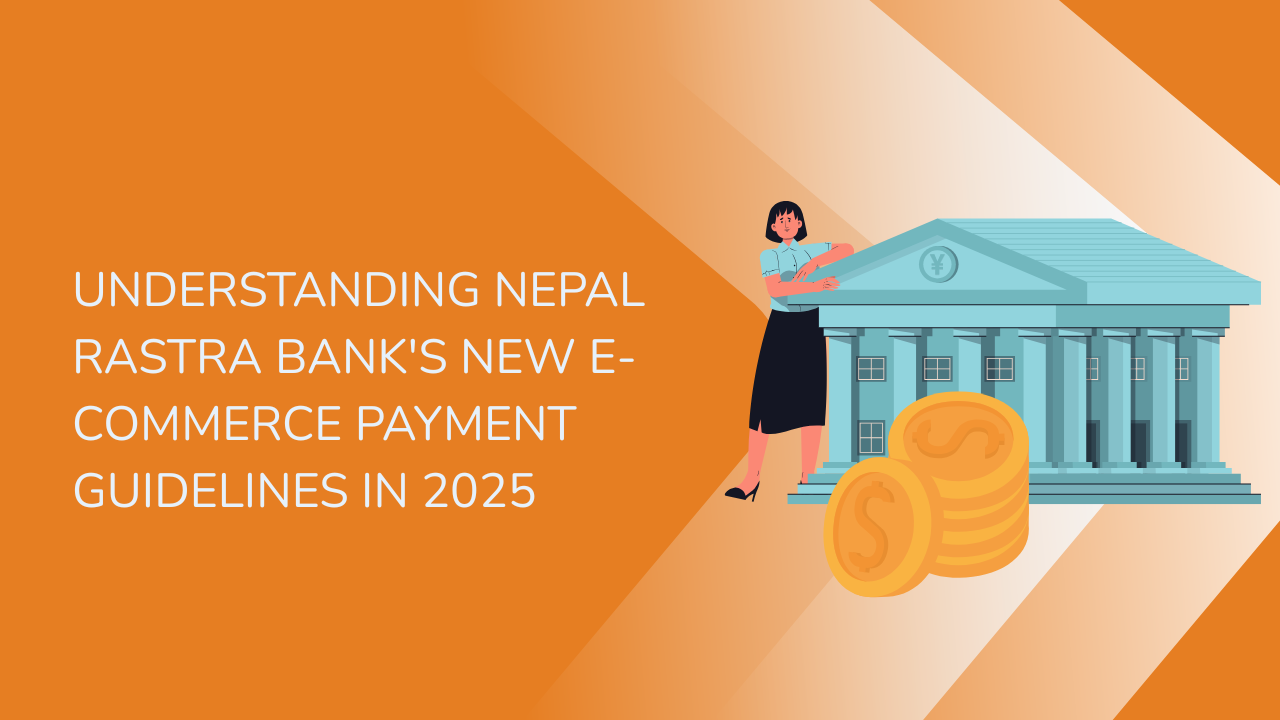Share this Article
As e-commerce businesses in Nepal grow rapidly, customer retention has become a key factor in achieving long-term success. Acquiring new customers is crucial, but retaining existing ones can often be more cost-effective and provide greater returns. One of the most effective ways to keep customers coming back is by offering a loyalty program. A well-designed loyalty program not only increases repeat business but also helps foster a sense of community and brand loyalty among customers.
In this guide, we’ll walk you through the steps of setting up a loyalty program for your Nepali e-commerce store. We’ll cover everything from defining your goals and choosing the right type of program to promoting it and tracking its success.
Why a Loyalty Program is Important for Your Nepali E-commerce Store
Nepal’s e-commerce market is evolving, and as more businesses enter the online space, customer retention is becoming more challenging. A loyalty program can help you stand out in a competitive market by offering customers an incentive to continue shopping with you. Here’s why you should consider implementing a loyalty program:
- Customer Retention: It’s easier and cheaper to retain existing customers than acquire new ones. A loyalty program encourages repeat purchases by offering customers rewards for their loyalty.
- Increased Average Order Value: Loyal customers are more likely to spend more per transaction. Loyalty programs can incentivize customers to purchase higher-value items or buy more products to unlock rewards.
- Word-of-Mouth Marketing: Happy, loyal customers are more likely to recommend your store to their friends and family. This type of organic promotion can be invaluable in a market like Nepal, where word-of-mouth plays a significant role in influencing purchasing decisions.
- Brand Loyalty: A well-executed loyalty program helps create a deeper connection between your brand and your customers. It builds a sense of community and encourages customers to feel like they are part of something special.
Step 1: Define Your Goals for the Loyalty Program
Before setting up your loyalty program, it’s crucial to define your objectives. Ask yourself: What do you want to achieve with this program? Common goals for loyalty programs include:
- Increased Customer Retention: Encouraging repeat purchases by rewarding customers for their loyalty.
- Boosting Average Order Value: Encouraging customers to spend more per transaction in order to earn rewards.
- Growing Customer Lifetime Value: Aiming to increase the total amount a customer spends with your store over time.
- Encouraging Referrals: Rewarding customers for referring friends or family members to your store, thereby expanding your customer base.
Once you have a clear understanding of your goals, you can tailor the structure and rewards of the program to meet those objectives.
Step 2: Choose the Right Type of Loyalty Program
There are various types of loyalty programs, and the right one for your Nepali e-commerce store will depend on your business model, goals, and target audience. Here are some of the most common types of loyalty programs:
1. Points-Based Loyalty Program
This is the most common type of loyalty program, and it’s easy to understand for customers. Customers earn points for each purchase they make, which can later be redeemed for discounts, free products, or exclusive offers.
- Example: For every Rs. 100 spent, a customer earns 10 loyalty points. Once they reach 500 points, they can redeem it for a Rs. 50 discount on their next purchase.
- Why It Works in Nepal: Points-based programs are simple and flexible, making them easy to manage and understand for both businesses and customers. Nepali consumers, particularly those who are more familiar with traditional rewards programs, may find this system appealing.
2. Tiered Loyalty Program
In this type of program, customers can earn different levels or tiers of rewards based on their purchasing behavior. For example, a customer may start at a basic level and, as they make more purchases, they move to a higher level with better rewards.
- Example:
- Bronze Tier: Earn 1 point for every Rs. 100 spent.
- Silver Tier: Earn 1.5 points for every Rs. 100 spent after spending Rs. 5000.
- Gold Tier: Earn 2 points for every Rs. 100 spent after spending Rs. 10,000.
- Bronze Tier: Earn 1 point for every Rs. 100 spent.
- Why It Works in Nepal: Tiered programs encourage customers to spend more in order to reach the next level, which can help increase sales volume. It also makes customers feel like they are part of an exclusive group once they reach higher tiers, creating a sense of prestige.
3. Cashback Loyalty Program
With a cashback loyalty program, customers earn a percentage of the money they spend as credit to use toward future purchases. This is an effective way to keep customers engaged because they receive direct value for every purchase.
- Example: Offer customers 5% cashback on every order. The cashback can be accumulated and redeemed for future purchases.
- Why It Works in Nepal: Many Nepali customers prefer immediate rewards or tangible benefits. A cashback program offers them an easy and clear incentive to continue shopping with your store.
4. Referral-Based Loyalty Program
This type of program rewards customers for referring new customers to your e-commerce store. When a new customer makes a purchase using a referral code or link, the referrer earns rewards like discounts, points, or free products.
- Example: Offer a Rs. 100 discount to both the referrer and the referee when a new customer makes their first purchase using the referral code.
- Why It Works in Nepal: Referral programs work well in Nepal due to the strong social connections and word-of-mouth influence. Nepali consumers often trust recommendations from family and friends more than traditional advertising.
5. Subscription-Based Loyalty Program
In a subscription-based program, customers pay a regular fee (monthly or annually) in exchange for exclusive benefits, such as discounts, early access to products, or free shipping.
- Example: Customers pay a yearly subscription fee of Rs. 1000 and get a 10% discount on every order, plus free shipping.
- Why It Works in Nepal: Subscription-based models can be appealing in Nepal, especially for businesses that sell frequently purchased items, such as groceries, cosmetics, or daily essentials.
Step 3: Select the Rewards
Once you’ve decided on the structure of your loyalty program, the next step is choosing the rewards that will motivate your customers to engage with the program. Here are some common rewards that work well for Nepali e-commerce businesses:
- Discounts: Offering customers a percentage or fixed discount on future purchases is one of the most popular rewards. Discounts are attractive because they offer instant savings, making them a strong incentive for customers to return to your store.
- Free Shipping: Many Nepali consumers prefer shopping online but hesitate due to high shipping costs. Offering free shipping as a reward can be a great way to incentivize purchases and boost customer loyalty.
- Exclusive Access: Provide loyal customers with early access to sales, new products, or special events. This makes them feel valued and appreciated, which can deepen their emotional connection with your brand.
- Gift Cards: Offering gift cards as a reward allows customers to choose products they like, making it a versatile reward option that appeals to a wide range of customers.
- Free Products or Samples: Offering free products or samples as rewards can be a great way to introduce customers to new items in your store. This is especially useful for businesses that sell beauty products, fashion items, or health supplements.
Step 4: Choose the Right Loyalty Program Software
To manage your loyalty program effectively, you’ll need a reliable loyalty program software. Many e-commerce platforms, such as Shopify and WooCommerce, offer built-in loyalty program features, but there are also third-party software providers you can integrate with your store. Here are a few options to consider:
- Smile.io: A popular choice for creating points-based and tiered loyalty programs. It integrates with major e-commerce platforms like Shopify, WooCommerce, and BigCommerce.
- LoyaltyLion: This software allows businesses to create custom loyalty programs, track customer behavior, and offer rewards. It also integrates with Shopify and other e-commerce platforms.
- Yotpo Loyalty & Referrals: Yotpo’s loyalty program allows businesses to create points-based or referral programs with an easy-to-use interface and powerful analytics.
For Nepali businesses, using platforms that support local payment gateways like eSewa and Khalti can make the integration process smoother and more convenient for your customers.
Step 5: Promote Your Loyalty Program
Once your loyalty program is set up, the next step is to promote it to your customers. Here are a few effective ways to spread the word:
- Email Campaigns: Use email marketing to inform your existing customers about the launch of your loyalty program. Send out special offers or exclusive deals to encourage customers to sign up.
- Social Media Marketing: Leverage platforms like Facebook, Instagram, and Twitter to announce your loyalty program and engage with your audience. You can also run paid ads to target potential customers.
- On-Site Promotions: Feature your loyalty program prominently on your website and product pages. Include clear call-to-action buttons encouraging customers to sign up.
- Referral Programs: Encourage customers who are already part of your loyalty program to refer their friends and family in exchange for rewards.
Step 6: Track and Measure Success
Tracking the performance of your loyalty program is crucial to understanding its effectiveness and making adjustments where necessary. Monitor key metrics such as:
- Enrollment Rate: How many customers are signing up for the program?
- Engagement Rate: How often are customers redeeming rewards or engaging with the program?
- Customer Retention: Are customers returning to make repeat purchases?
- Referral Activity: How many new customers are being referred by existing loyalty program members?
Use these metrics to refine your program and make improvements over time. A successful loyalty program should continue to evolve to meet the needs of your customers and your business.
Conclusion
A well-executed loyalty program can be a game-changer for your Nepali e-commerce store. By offering rewards that resonate with your customers, you can foster long-term loyalty and increase repeat business. From choosing the right type of program to promoting it effectively, each step of the process plays a crucial role in ensuring your program’s success.
By following the steps outlined in this guide, you can create a loyalty program that not only increases customer retention but also strengthens your brand’s presence in Nepal’s growing e-commerce market.
Categories:
E-commerce Tips & Tutorials
,
Marketing & Growth
,
SEO & Content Marketing
,
Beginner’s Guides
,
Sales & Conversion
,
Success Stories & Case Studies
,
Platform Features & Updates
,
Platform Comparisons
,
Design & UX Best Practices
,
Industry Trends & News
,
Tools, Apps, and Integrations
Tags:
Online Store in Nepal
,
5 Simple Steps
,
local businesses
,
e-commerce app
,
Small Business
,
strong brand
,
E-commerce
,
Role of Social Media
,
Growing sales






